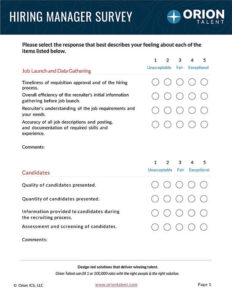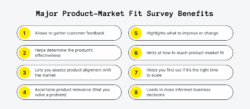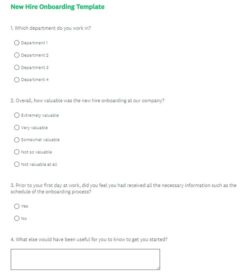Understanding what truly drives your customers can feel like trying to hit a moving target. Many businesses focus on demographics or psychographics, trying to pinpoint who their customers are, but often miss the critical "why" behind their purchasing decisions. This is where the Jobs to Be Done framework steps in, shifting the focus from product features to the actual problems customers are trying to solve or the progress they are trying to make in their lives. It’s about recognizing that people "hire" products or services to get a job done.
To effectively uncover these underlying jobs, you need a structured approach, and that’s precisely what a well-designed jobs to be done survey template offers. It’s not just another questionnaire; it’s a strategic tool designed to pull back the curtain on customer motivations, struggles, and desired outcomes. By moving beyond superficial preferences, you can uncover the deep-seated needs that, when addressed, lead to truly innovative and successful solutions.
Crafting Effective Jobs to Be Done Survey Questions
Developing a powerful jobs to be done survey template requires a shift in mindset from asking "what do you want?" to "what are you trying to accomplish?" The goal is to understand the full context surrounding a customer’s decision to "hire" your product or service. This means delving into the events leading up to their purchase, the struggles they encountered, and their expectations for progress. It’s about listening for the narrative, not just ticking boxes.
Think about the journey your customer is on. What was the "push" that made them seek a new solution? Was it a recurring frustration, a life event, or perhaps a new aspiration? Understanding these triggering circumstances helps frame their "job" in a realistic context. For example, someone might not just "buy a drill" but "create a hole to hang a family photo," driven by the job of making their house feel more like a home.
Then, explore the "struggles." What obstacles did they face with their old solutions, or even just in their attempts to get the job done without a specific product? These pain points are crucial insights, as they highlight opportunities for your product or service to provide superior value. It’s not enough to know they want a solution; you need to understand the inefficiencies, frustrations, and anxieties they’re hoping to eliminate.
Finally, focus on the "desired outcomes." What does success look like to them? How do they measure progress? This isn’t about asking what features they want, but what capabilities or improvements they seek in their lives or work. Do they want to save time, reduce effort, minimize risks, or achieve a specific emotional state? These outcomes are the true metrics of a job well done from the customer’s perspective.
When building your jobs to be done survey template, consider these categories for your questions:
- Circumstance-Based Questions:
- What happened in your life that made you start looking for a solution like ours?
- What were you doing just before you decided you needed [product/service category]?
- Describe the last time you found yourself needing to [perform the job].
- Struggle-Focused Questions:
- What were the biggest frustrations or difficulties with your previous approach to [the job]?
- What challenges did you face when trying to [perform the job] before finding our solution?
- What sacrifices or compromises did you have to make?
- Desired Outcome Questions:
- How would your life or work be better if you could [get the job done perfectly]?
- What does success look like for you when you’re trying to [perform the job]?
- How do you measure progress or improvement in relation to [the job]?
- Switching Triggers and Inertia:
- What almost stopped you from trying our solution?
- What alternatives did you consider before choosing us, and why did you rule them out?
- What made you finally decide to make a change?
Implementing and Analyzing Your Jobs to Be Done Survey
Once you’ve designed your jobs to be done survey template, the next crucial step is its implementation and the insightful analysis of the responses. It’s not just about sending it out to as many people as possible; it’s about reaching the right individuals who have recently "hired" your product or a competitor’s, or who are actively struggling with the job you aim to address. Consider focusing on recent purchasers or those who have just completed a trial period, as their memories of the "hiring" process will be fresh.
When collecting responses, encourage open-ended answers rather than simple multiple-choice selections where possible. The rich, qualitative data from narratives and detailed explanations is far more valuable for uncovering the nuances of a job to be done. Frame questions in a way that prompts storytelling, allowing respondents to describe their journey, their emotions, and their personal context. Remember, you’re looking for the "how" and "why," not just the "what."
Analyzing the data from your jobs to be done survey is where the real magic happens. This isn’t a statistical exercise in averages and distributions; it’s a qualitative deep dive. Look for recurring themes, common struggles, and shared desired outcomes across different respondents. Group similar "pushes," "pulls," "anxieties," and "habits" that influence their decision-making. Pay close attention to the language customers use to describe their experiences, as this often reveals the true nature of their jobs.
Ultimately, the insights gleaned from a carefully executed jobs to be done survey template should directly inform your product development and marketing strategies. Instead of building more features that might go unused, you can focus on creating solutions that directly alleviate customer struggles and help them achieve their desired outcomes more effectively, conveniently, or affordably. This customer-centric approach leads to products and services that truly resonate and solve real-world problems.
By embracing the Jobs to Be Done framework and utilizing a thoughtfully constructed survey, you shift your focus from merely selling products to helping customers make genuine progress in their lives. This deeper understanding of customer motivations allows you to innovate with purpose, design solutions that truly matter, and articulate your value proposition in a way that speaks directly to their needs. It’s about building a sustainable business by consistently delivering on the promise of a job well done for your customers.



